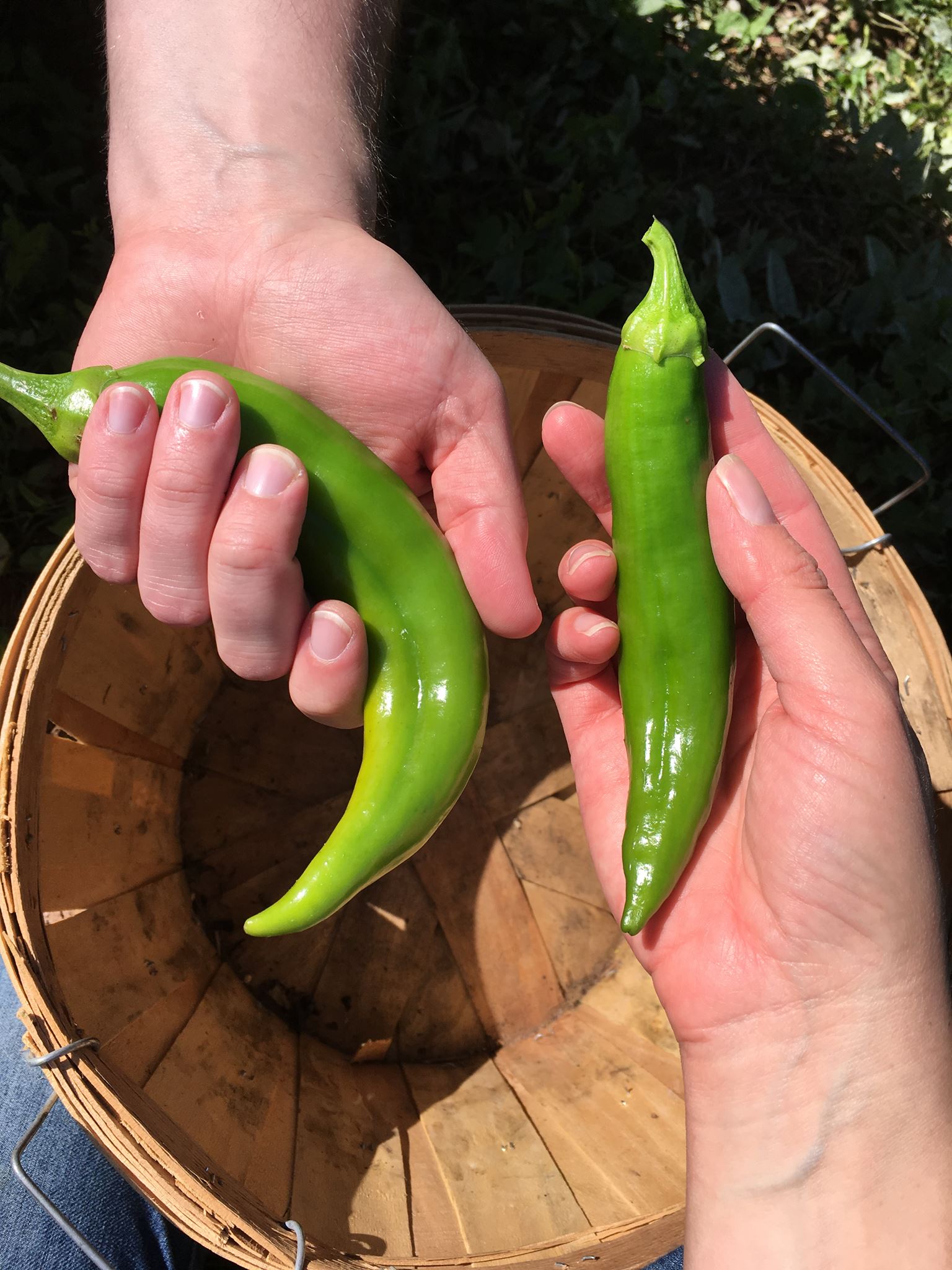Once we brought our roasted chile home, the next step was to peel the crisp, blackened skins from the flesh of the fruit. Gloves protected our hands from the burn of capsaicin, the compound that gives peppers their spicy heat. In all we communed at the table about an hour, peeling our way through the half bushel one pod at a time. The work was meditative. We listened to music, talked, laughed. The fragrance that clouded the house for a day was heavenly.
Nothing quite lives up to the experience of gathering and preparing your own food, farm to table. Our labor was light, but still, it was labor: a full day of traveling to the field, picking our harvest, bringing it to the roaster, and handling each still-steaming pod to remove the stem and seeds. We knelt and stretched our legs, reached and lifted our arms, felt the heat of the day manifest as sweat on our skin, soaked in the sunlight and sounds and scents, and handled our food with tender attention to color and texture.
That is a meaningful human experience, my friend.
Yes, it’s more convenient to buy jars of chile at the supermarket. Yes, that’s a great time-saver most weeks of the year when we’re otherwise occupied and not able to devote full days to agritourism, let alone actual farm work. Still, isn’t is funny how as a society we’ve saved ourselves so much time by outsourcing our food production to the food industry, and then find we need to fill that saved time with fabricated experiences? Maybe keeping a hand in cultivating and harvesting our own food is one of the most meaningful ways we can address that deep human need for stimulation and connection without resorting to commercialized absurdity.


















